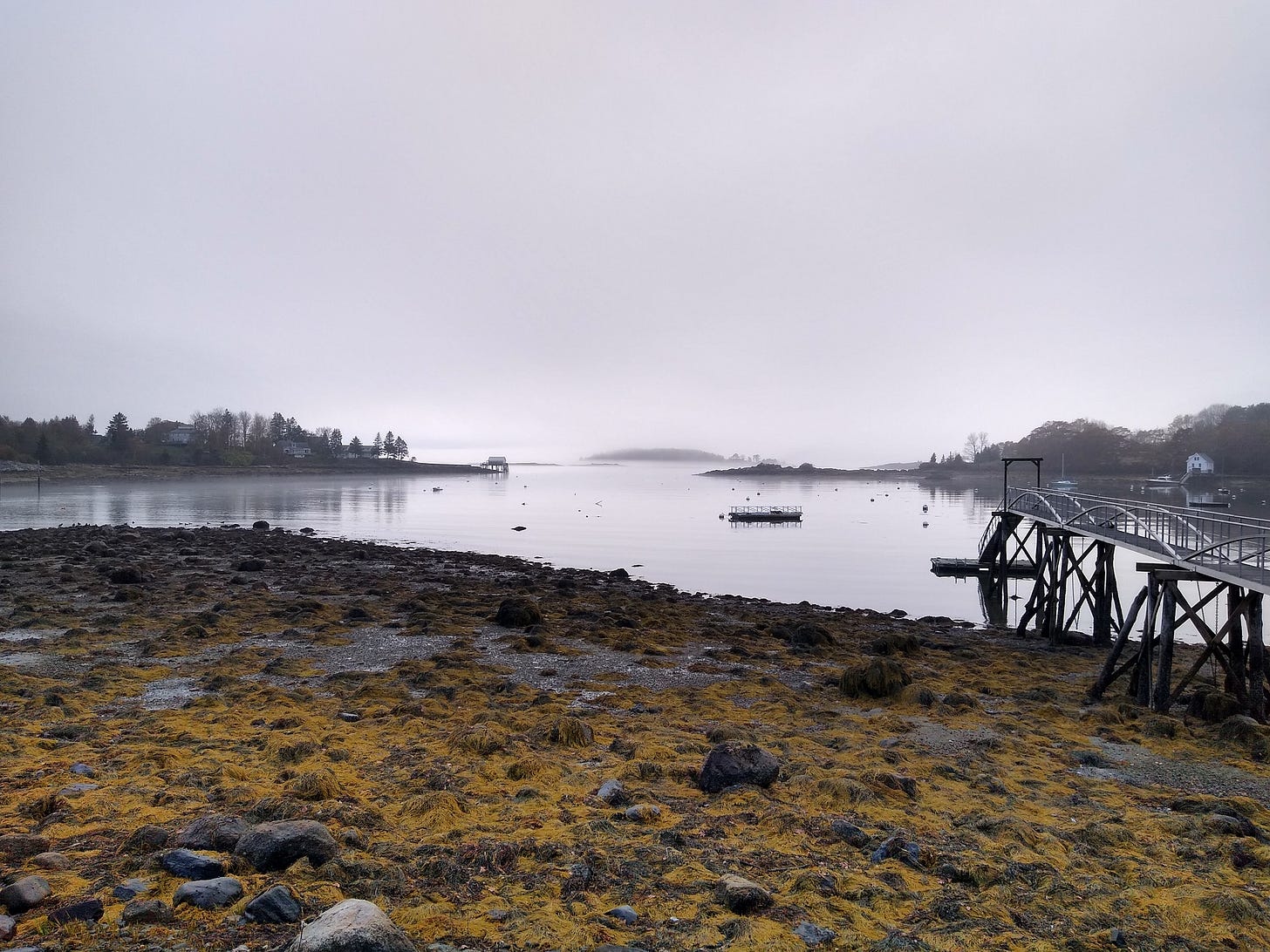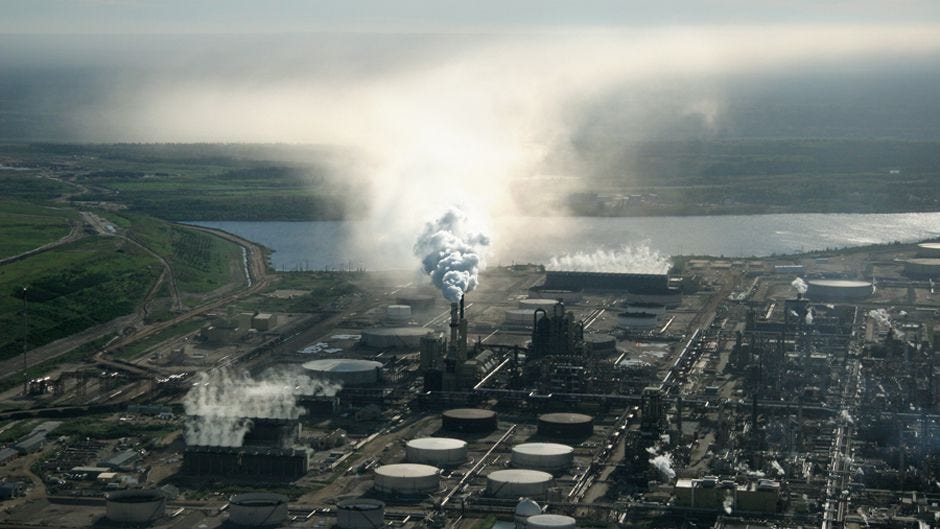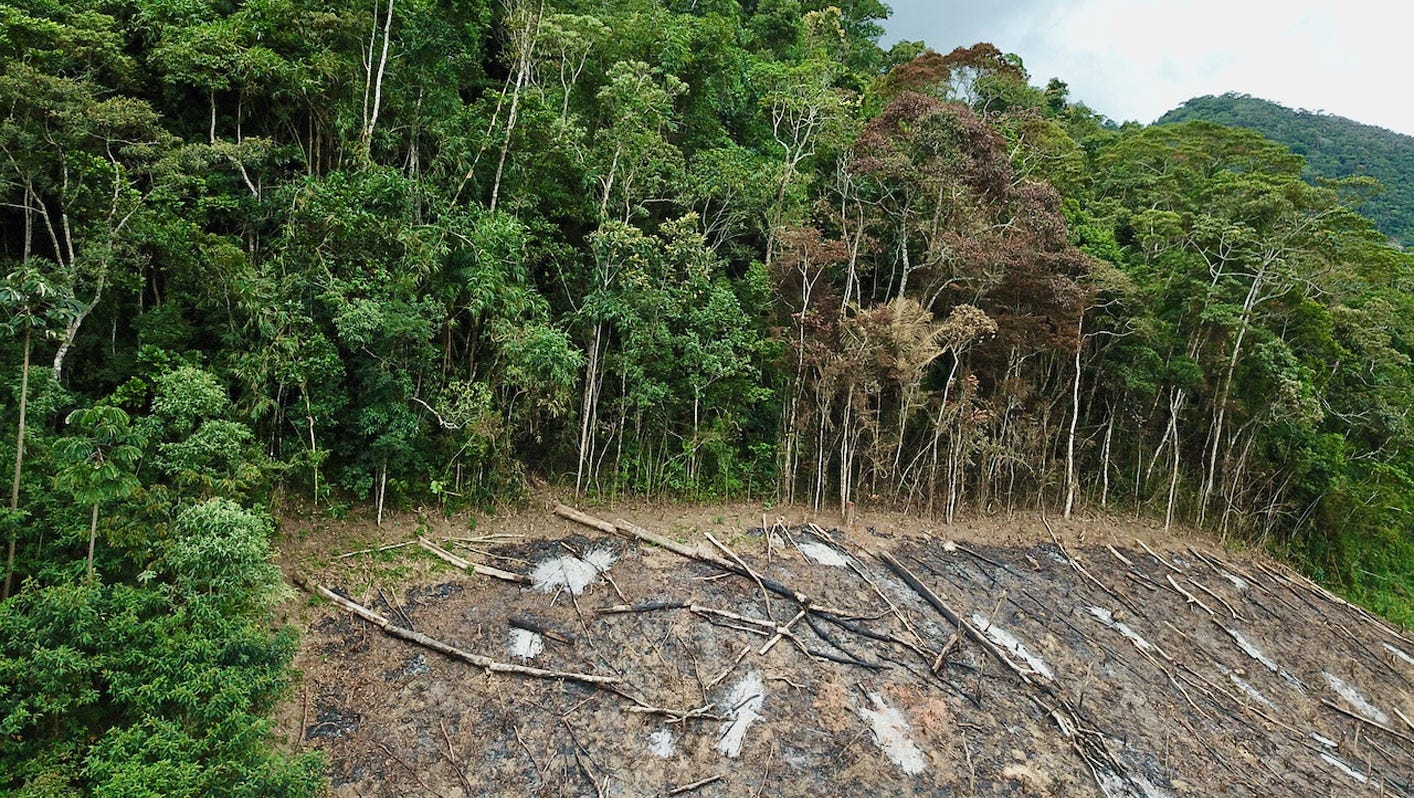The 2022 Living Planet Report, Part 2
11/10/22 – Some thoughts on building a “nature-positive” society
Hello everyone:
I hope you’re all feeling somewhat optimistic in the wake of recent events that suggest a slightly brighter horizon for life on Earth. With Lula in charge in Brazil, Putin retreating from Kherson, and the U.S. midterms a poor turnout for the political party most closely tied to the fossil fuel industry, there are reasons to enjoy a deep breath or two. We’ll see what comes out of December’s U.N. Biodiversity Conference and the current U.N. Climate Conference where, infuriatingly, there are 636 gas and oil industry lobbyists, but for now just enjoy a bit of progress. You can read a bit more about all this at The Crucial Years, Bill McKibben’s newsletter.
As always, please remember to scroll past the end of the essay to read some curated Anthropocene news.
Now on to this week’s writing:
How do we reshape global society so that it respects, protects, and replenishes life on Earth? The short, glib answer is: As soon as possible, and by any means necessary. The philosophical answer might be something like this: We must reimagine who “we” are, remember that we belong to the Earth (rather than pretending it belongs to us), and remind ourselves that ecologies are real while economies are social fictions.
A long, deeply-informed policy-making answer might look something like what the Living Planet Report (from the World Wildlife Fund and Zoological Society of London) outlines in its chapter titled “Building a Nature-Positive Society.”
I wrote last week about the U.N.’s recent overwhelmingly positive vote (161 nations in favor, 8 abstentions, and 0 opposed) to recognize the human right to a clean, healthy, and sustainable environment. The purpose of such recognition is to lay the foundation for what, in the end, may be one of the more important tools available to respond to the warming climate and our intensifying extinction of life on Earth. This is, as the report says,
the rights-based approach to the interconnected crises that are preventing people from living in harmony with nature – the climate emergency, the collapse of biodiversity, and pervasive pollution.
This “rights-based approach” may prove vital. Where regulations falter or policy fails, where the market isn’t fast or willing enough to turn the ship of civilization in a healthier direction, and where other forms of citizen activism meet their limits, this declaration of an environmental right – if given legal or constitutional status – could do the job. Where this right exists, or is at least supported, it has already proven useful:
In recent months, the right to a healthy environment has been used by communities to block offshore oil and gas activities in Argentina and South Africa, because of the potential impacts on marine mammals. The right was used to compel governments in Indonesia and South Africa to take action to improve air quality and to stop an ill-advised coal-fired power project in Kenya. The right was used to protect forests from mining in Ecuador and to eliminate the use of a bee-killing pesticide in Costa Rica. Climate lawsuits drawing upon the right to a healthy environment are occurring all over the world, and research indicates they are more likely to be successful than not.
As the rights-based approach slowly spreads, we must also hurry to sweep fossil fuels into the dustbin of history. Children born today should grow up reading that 21st century fossil fuel corporations were as morally deficient as 19th century slaveholders and as dangerous as 20th century nuclear arsenals.
The context for those future textbooks, though, should clearly state that the existential threat posed by fossil fuels was not merely to humans. The diversity of life on this verdant planet – from archaea to zebras – is today critically threatened by the warming of ocean and atmosphere and by the flood of petroleum-based fertilizers, chemicals, and plastics that poison land, river, and sea.
The “double emergency” of climate chaos and biodiversity loss are deeply intertwined, as I discussed last week. The drivers of both are as numerous as human foibles, ranging from the obvious – burning down rainforests to plant corn, soy, and oil palm monocultures – to the more particular or nuanced, like the idiocy of bitcoin or the wastefulness of “fast furniture.” But there is some simple and disastrous math that underlies all of it:
Over the last 50 years, the human population has doubled, the global economy has grown nearly fourfold and global trade has grown tenfold, together dramatically increasing the demand for energy and materials.
In a bizarre understatement on the fundamental problem of our obsession with economic growth, the chapter notes that
Economic incentives have generally favoured expanding economic activity, often with environmental harm, rather than conservation or restoration.
Economic incentives have until recently always incentivized growth, and have done so without regard for life. As I’ve written before, the idea that a city or nation, much less human civilization, can sustain constant economic growth is not merely absurd. It is insane. And yet we hear news breaking daily about the ups and downs of growth forecasts, with gloom attached to anything less than several percentage points upward. Constant growth is the logic of the cancer cell oblivious to its host, and may be an even more fundamental driver of the double emergency than fossil fuels. After all, in a steady-state economy energy and resource use should remain stable as well.
The dramatic increase in population and the global economy over the last half century has driven the unsustainable demand for energy and food and materials. We now live in an existential absurdity that should be a front-page headline and a major driver of policy rather than merely the concern of anxious environmentalists: Our species’ ecological footprint now requires 1.75 Earths. If unchecked, our 75% overshoot of the planet’s ability to produce life – what is called Earth’s biocapacity – can only lead to mass extinctions and chaos in human society.
I really don’t like writing dramatic sentences like these, but the drama is in the math rather than in my response to it. If the mainstream media broadcast ecological news rather than economic news, these would be the “if it bleeds it leads” headlines.
To imagine the path forward, the Global Footprint Network has a scenario tool with parameters (per person footprint, human fertility rate, age of motherhood, etc.) that you can tweak to see what effect each has on bending the curve back toward sustainability.
Unsurprisingly, then, the Living Planet Report informs us that the only way forward is to make a rapid, system-wide transformation. That is, we need to fully reimagine and redesign civilization, and do it quickly so that we limit warming to 1.5°C or 2.0°C and end the degradation and decline of ecosystems. This is neither optimism nor ideological social engineering. It’s a rational response to the scale of the problem, tempered by an understanding of how hard it will be:
With a fundamental, system-wide reorganisation across technological, economic and social factors, including paradigms, goals and values, there might still be a chance that we can reverse the trend of nature’s decline.
This means rapid decarbonization of all sectors of society, from transport to agriculture and from energy to industry. It means increasing agricultural yields while reducing agricultural footprints and pollution. It means fewer cows and less meat. It means a profound change in how affluent societies shop for things that are violently extracted from other places. And it means a massive commitment to conservation and ecosystem restoration. And much more.
This is, to put it mildly, “transformative change.” But however disruptive it will be to the human status quo, it’s merely the cost of reversing our extreme disruption of Earth’s natural systems. There is no path forward for us and our children that does not include massive disruptions. None. We have to accept that now. They’ve already begun. It’s a matter of our choosing which disruptions we want to suffer, how much worse they will become, and how much suffering we are willing to cause for our children and for the already tattered fabric of life.
One large-scale leverage point for limiting biodiversity loss is the global supply chain. At the moment we have a haphazard collection of voluntary shopping options – allegedly “sustainable,” “organic,” “fair trade,” or “eco-friendly” – that are hard to vet. If legally binding restrictions on unsustainable practices are made commonplace in all trade agreements, with strong enforcement provisions, then rich nations like the U.S. will no longer be able to offshore our ecological damage onto poorer nations whose forests and farms would otherwise be safer places for biodiversity.
The push for this supply chain defense of biodiversity is coming from a project called The Trade, Development, and Environment Hub, “a multi-country, interdisciplinary collaboration that seeks to understand international trade systems and their social and environmental impacts.” It’s run by the U.N. Environment Program’s World Conservation Monitoring Center (UNEP-WCMC), “a global centre of excellence on biodiversity and nature’s contribution to society and the economy.”
Other necessary aspects of transformative change are economic fairness and diversity. The report gets quite wonky here, so I’ll summarize it this way: Today’s agribusiness and trade systems, two major forces of biodiversity loss, are driven by efficiency and profit rather than by the health of people (farmers/producers and consumers) and of ecosystems. If the capitalist model doesn’t bow to the necessity of letting everyone thrive, then the suffering of plants, animals, and human communities will worsen as the Anthropocene intensifies. The solution is to diversify everything, from fields (intercropping vs. monoculture, for example) to trade networks, and to value people over profits.
So, in other words, to fix biodiversity loss we need to fix capitalism… But we pretty much knew that already, right? Coincidentally, I received an email today from the wonderful Maine gardener’s resource, Fedco Seeds, which addressed this directly:
With extractive capitalism wreaking havoc on our planet, we are interested in exploring more sustainable and cooperative models of exchange, especially for something like seeds, which have essential worth in sustaining life.
But even here there’s a glitch, because perhaps the fairest “fix” on the global stage is to require more affluent nations to produce so many biodiversity benefits that some less developed countries can still have a net loss in biodiversity as they work more slowly to provide adequate living conditions for their citizens. (These are the kind of equity conversations dominating the current climate talks in Egypt.)
Another wonky section of the chapter digs into various technical models for how to bend the curve of biodiversity loss away from extinction and back toward restoration. The short answer, again, is diversity, both on the ground and in our efforts. Large-scale conservation plans, like the Half-Earth project, are essential for giving the natural world space to thrive, but studies show that to bend the curve such area-based conservation must be “combined with changes in the energy and food systems, minimising food waste, reducing the consumption of animal products and limiting climate change.”
As I noted above, to create transformative change we have to change the basic assumptions of economics. Constant growth is a fantasy that ignores the laws of physics and the limits of the natural world. Incentives and subsidies that support the fantasy have to go away, and the pricing of goods and services must be rooted in the full actual cost to society and the environment.
Another way to say all of this: We need a new set of values.
The usual conversation around biodiversity is responsive to events – e.g. we need to slow or stop deforestation, or we need to ask agribusiness to use fertilizer more sparingly – but the only path forward is to also change the value system that is upstream of the bad behaviors. These “indirect drivers,” as the report calls them, include a rapidly increasing population, the global spread of high-consumption activities, and the obsession with economic growth. Instead we need, as the report says, “to move to an economy that values well-being in its diverse forms, not only monetary, and one which is fully responsive to resource scarcity.”
I wish that this week’s writing was more focused more on the real world – what we call nature – than on these abstract policy perspectives, but I promised you a summary of the Living Planet Report and, really, these abstractions are the forces that have created the Anthropocene. Thus we have to understand them so that we can change them, in order to rebuild a rational and sustainable society amidst a vibrant community of life.
I’ll leave you then with an economic metaphor from the report that is nonetheless a well-written analysis:
For far too long people have borrowed from our environmental future to pay for our economic present. We know climates are quickly destabilising, ecosystems are decaying, and species are going extinct. We now have an urgent choice – to repay our debts, or continue to destabilise the infrastructure of modern human society.
Logic dictates the answer; defaulting is not an option. We know what we must do: balance to zero the accumulation of greenhouse gases in our atmosphere, the destruction of our forests, fields, and water, and the population declines and extinctions of species.
How we “balance to zero” all of our destruction is the question that underlies the Living Planet Report. Its wonky abstractions and dense graphics are a bit scattershot but they represent an ongoing astonishing effort by scientists and conservation groups and activists to build the case for honoring and protecting all life. We all owe them a deep debt of gratitude and whatever support we can give them.
They’re bringing that case to Montreal in a few weeks to the COP15 Biodiversity Conference in order to hammer out, finally, a Global Framework for Biodiversity. Much depends upon its success.
Thanks for sticking with me.
In other Anthropocene news:
From NPR, don’t rake those leaves and send them to the landfill. Let them stay where they are for the winter to enrich invertebrate biodiversity around your home. Or, if you can’t stand to look at them, you can grind them up with the mower to benefit the soil. Or, if even that isn’t tenable, you can use them to enrich your compost or a community composting program.
All through November there’s a 10th anniversary celebration of World Vasectomy Day. Read up on their site’s FAQs for more on this simple, effective solution for male birth control.
From Anthropocene, controlled burns may be a good way to make Eastern forests less friendly for the ticks that carry Lyme and other diseases. Eastern forests evolved over many millennia under indigenous fire management. In fact, fire is as natural and as necessary as rain, but we’ve forgotten that.
From Destabilized, a Substack newsletter on U.S. politics and the climate, an excellent assessment of how insurance companies make an honest barometer for how quickly the climate is changing.
From the Guardian, an unsurprising yet still disheartening announcement on the massive gap in greenhouse gas emissions between rich and poor in the UK. The wisest move would be to tax the top 1% (or 10%) based on their emissions, but which politicians have the nerve to do it?
Also from the Guardian, whales are ingesting millions of microplastic particles per day.
From Hakai, a story of hard work and irony when climate science is made much harder by the climate: This is a great article about a top-notch Louisiana laboratory perched on the margin between flooded land and the Gulf’s ever-increasing and ever-intensifying storms.








